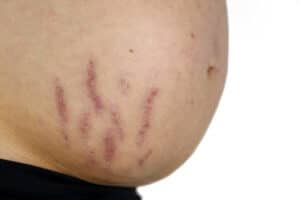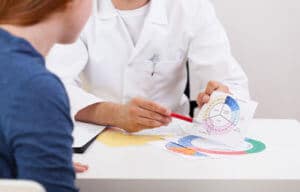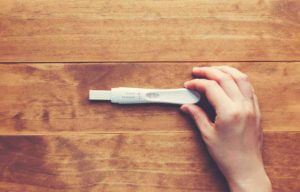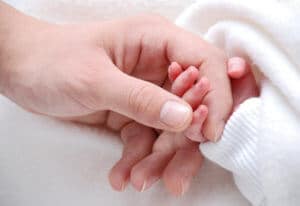The look at the pregnancy test is again a disappointment? And you’re worried that “having children” might not work out at all? Thanks to modern medicine, the desire to have children is no longer a problem, even for infertile couples. We inform you about the procedure of artificial insemination and what you have to consider.
Table of contents
Still Not Pregnant: What Now?
Fertility Test Of Both Partners
If you have already gone through more than 12 cycles of practice, you and your partner should see a doctor. At the doctor’s office, both of you will be examined for fertility. For a woman, this includes ultrasound and hormone tests, cycle observations, and a uterine endoscopy. Through an ultrasound of the testicle and a post-coital test, the man’s semen is examined. In addition, the doctor looks at both sexes’ own and family medical history.
Consultation
These examinations are a prerequisite for artificial insemination. In a subsequent consultation, the doctor will recommend a treatment method. First, however, you should decide whether artificial insemination is an option for you at all. The following applies here:
Take Your Time
After you have received your diagnosis, you should not rush into anything. Take time for each other and for yourselves, talk about it and inform yourselves.
Seek Help From Your Doctors
Many women who have been treated report that opening up to doctors has helped them. The doctors have done this treatment many times and understand your concerns. Dare to come to them with your fears. And contact them if you have any medical questions.
The Different Methods Of Treatment
There are different methods of artificial insemination. A distinction is made between in vitro fertilization (IVF) and intracytoplasmic sperm injection (ICSI). What they have in common is that the egg is not fertilized in the woman’s body, but in the laboratory. They are therefore referred to as reproductive medicine.
Another option for artificial insemination is sperm transfer, in which the sperm is injected directly into the woman’s uterus.
Most of the time, the appropriate procedure will be recommended to you by your doctor.
In Vitro Fertilization (IVF)
In vitro fertilization literally means “fertilization in a glass”. The egg and sperm are brought together in laboratory glass. As in a natural pregnancy, their fusion takes place without assistance. The only difference is that this does not take place in the woman’s body but in the laboratory.
When To Choose IVF?
In the beginning, in vitro fertilization was used only in women with tubal dysfunction. This prevents the egg and sperm from fusing naturally.
In addition, male infertility, sterilization, or loss of the fallopian tubes can also be reasons for IVF.
Intracytoplasmic Sperm Injection (ICSI)
As the name suggests, sperm is injected into the egg. This process also takes place in the laboratory. However, unlike IVF, here the fertilization of the egg is directly induced.
When To Choose ICSI?
This method is often recommended when sperm quality is more limited since theoretically only one sperm cell is needed. However, ICSI also often follows when IVF has failed: Those who have achieved a low fertilization rate with a previous IVF usually switch to sperm injection on their second attempt.
Sperm Transfer/Intrauterine Insemination (IUI)
In this method, the egg remains in the woman’s body. The prepared sperm is injected directly into her uterus with the help of a catheter. In most cases, insemination is preceded by hormone treatment of the woman.
It is called homologous insemination when the sperm of the woman’s own partner is used. However, there is also the possibility of using preserved sperm from a sperm bank. This is called heterologous insemination with kyrosperm.

When To Choose IUI ?
Often, sperm transfer is used when the man has a limited spermiogram. There are fixed specifications as to which sperm quality an IUI may be used.
Insemination is also a good way to help couples who have not been able to identify a cause for their infertility. Such a case is called idiopathic infertility.
In addition, IUI offers singles and lesbian couples the possibility to have children. The sperm bank gives them the chance to use sperm from an anonymous donor.
Preparation For Treatment
Who Pays?
Before the treatment really begins, there is of course the question of costs. Here, you should in any case deal extensively with the offers of the health insurance companies. Many health insurance companies now cover not only 50% but guarantee the entire costs for three artificial inseminations. It is therefore advisable to change your health insurance company if necessary.
The approval of the health insurance depends on the following conditions:
The Statutory Health Insurance Covers Costs If
…the couple is married.
…the couple is not sterilized.
…no donor sperm is used.
…the age of the man is between 25 and 40 years.
…the age of the woman is between 25 and 40 years.
Private Health Insurance Covers Costs If…
…the couple is married.
…the couple is not sterilized.
…from the age of 40 years of the woman, the probability of pregnancy is greater than 15%.
Health Precaution
It is advisable to have both partners tested for HIV before artificial insemination. Testing for hepatitis, toxoplasmosis, and chlamydia is also helpful. As before any natural pregnancy, a woman should have her protection against rubella checked.
Change Lifestyle
Three to four months before artificial insemination, both partners should maintain a healthy lifestyle. After all, the sperm and egg must be as healthy and efficient as possible during fertilization. In addition to a healthy diet, care should be taken to avoid alcohol and cigarettes.
You can find out how to stop smoking during pregnancy here!
Concrete Procedure Of Artificial Insemination
First Step: Hormone Treatment
The procedure of artificial insemination begins with the so-called downregulation. Hormone preparations are used to suppress the actual ovulation of the woman. Hormone treatment is different for each woman. A customized treatment plan specifies which tablets and injections she must take at which time.
About two weeks after downregulation, the ovaries are hormonally stimulated. This stimulates them to produce several fertilizable eggs. This usually takes between 8 and 13 days. The whole process takes place during the menstrual cycle.
Second Step: Ovulation And Egg Retrieval
Nine to eleven days after the start of stimulation, the woman is injected with the hormone HCG (human chorionic gonadotropin). It ensures that ovulation is initiated. 36 hours later, the time has come: the egg is removed from the vagina with a needle. The doctors monitor the procedure via ultrasound.
Here it is possible to receive sedatives or even general anesthesia if necessary. After the procedure, slight bleeding and soreness may occur.
Third step: fertilization in the laboratory
Sperm Collection
The partner must masturbate in a special room on the day of fertilization to ensure the provision of sperm. Those who have problems “producing at the push of a button” should consult their doctor. An alternative option may be to bring the sperm from home in a special container.
The sperm is then prepared in the laboratory. This improves the fertilization ability of the sperm and thus increases the probability of pregnancy.
Meeting Of Egg And Sperm
In in vitro fertilization, the egg and sperm are now placed in nutrient fluid. They are then placed in an incubator where fertilization is to occur.
If ICSI is performed, the sperm cells are selected under a microscope beforehand. They are then injected into the eggs with a very fine needle.
In both methods, the result is checked one day after fertilization. The criterion is that two so-called “pronuclei” have formed. Now the couple has to decide what to do with the remaining eggs. In order to have a higher chance of success, more eggs are removed from the woman than are really needed.
What Happens To The Surplus Eggs?
In most cases, two to three eggs remain in the incubator so that embryos can develop from them. The remaining eggs can either be frozen or destroyed according to the law.
Freezing offers the possibility to use the eggs again in later fertilization attempts. However, the success rate for frozen eggs is significantly lower than for freshly fertilized eggs.
This process, called cryopreservation, is only allowed in the pronuclear stage. At this time, the eggs are not yet covered by the Embryo Protection Act and are therefore not yet considered human life. However, this is a highly controversial ethical issue. Anyone undergoing artificial insemination should be aware that oocytes remain common and may need to be destroyed.
Freezing costs are not covered by health insurance. Since cryopreservation and destruction of oocytes is a sensitive issue, it is advisable to think about it before artificial insemination.
Last Step: Transfer Of Embryos To The Uterus
In order for a baby to actually grow in the woman’s womb, the eggs must be returned to the uterus. This happens 3 to 5 days after fertilization. The procedure is not very painful, so anesthesia is not necessarily needed.
The embryos are inserted into the uterus through the vagina. There is a maximum of three embryos.
Pregnant?
10 to 12 days after the embryos have been transferred, the women can find out whether the pregnancy has been successful by means of a blood test. This long uncertainty leads many women to perform an early pregnancy test at home.
A month later, pregnant women can then see from ultrasound if it is one or more children.
Risks Of Artificial Insemination
Already during the procedure of artificial insemination, some things can go wrong. Despite hormone stimulation, sometimes no fertilizable eggs are found. Often the embryos do not nest in the uterus or fertilization does not even occur.
Even after artificial insemination has been completed, difficulties can still arise.
Physical And Mental Stress
Hormone stimulation is always associated with a health risk. Both mentally and physically, the treatment is very stressful. In a few cases, the woman’s body may even overreact to the hormones. The so-called overstimulation syndrome leads to nausea, abdominal pain, and shortness of breath. The doctor in charge must therefore be contacted immediately. In the worst case, even a longer hospital stay is necessary.
In addition, the probability of success with artificial insemination is between 15 and 20%. It therefore usually takes several cycles before the woman is actually pregnant. Each cycle represents a new physical and emotional burden for the couple and especially for the woman’s body. One should be aware of this beforehand.
Risk Of Malformation
In contrast to natural insemination, malformations of the child can occur in every 12th pregnancy and not only in every 15th. IVF and ICSI increase the likelihood of heart defects, malformations of the gastrointestinal tract, and cleft lip and palate.
Multiple Pregnancies
Two or three embryos are often transferred into the woman’s uterus. Therefore, multiple pregnancies often develop. These often lead to premature labor and premature birth with a risk of psychological or physical impairment.
Chances Of Success With The Procedure Of Artificial Insemination
As mentioned above, the probability of success with IVF and ICSI is between 15 and 20%. However, this only includes the eggs that have already been fertilized. In every tenth treatment, fertilization does not occur at all.
In addition, various factors can be determined on which the success rate depends. Of course, the age of the couple plays a role, as does the reason for their infertility. During the treatment itself, the psychological stress of the couple and the number of fertilized eggs can influence it.
Do Not Rush
Overall, it is important to carefully consider the chances, risks, and procedures before undergoing artificial insemination. Since the treatment and its success are very much influenced by one’s own mental state, one should be aware beforehand of what exactly one is getting into. Any uncertainties and fears should also be clarified before the procedure.














3 thoughts on “Fertility Clinic: Procedure Of Artificial Insemination”